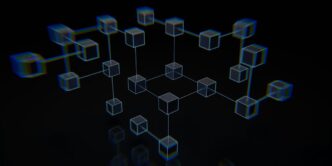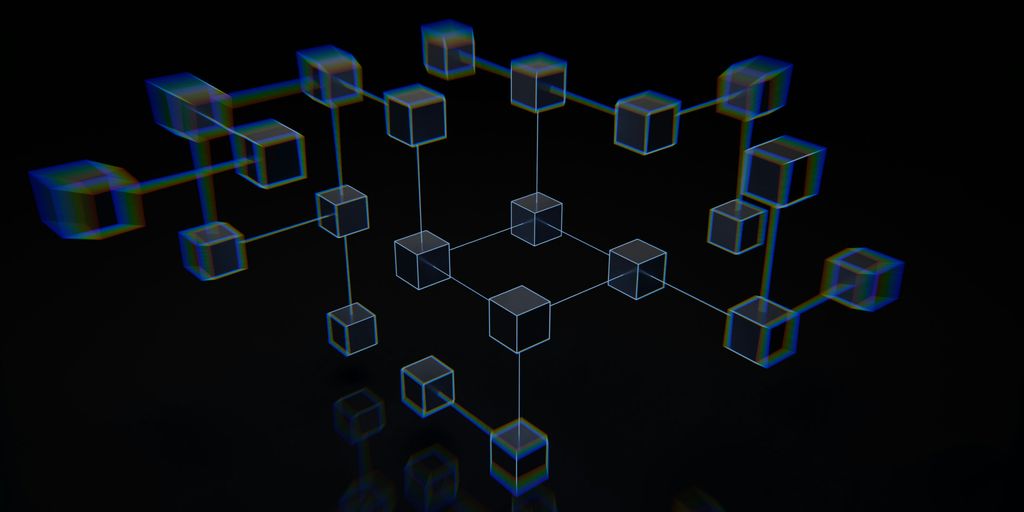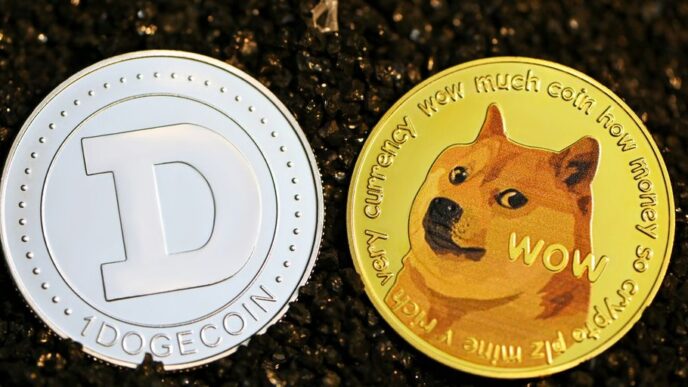The internet is changing, and Web3 is leading the way. It is the next big step, using blockchain and other cool tech to give folks more control over their online stuff. This means a more open and fair internet, where users are in charge, not big companies. As this new internet grows, some big web3 companies are really pushing things forward, setting new rules for how we interact online. This article looks at some of the biggest web3 companies out there, the ones making a real difference in this new, decentralized world.
Key Takeaways
- Web3 lets you own your data and online identity, making things safer and more private.
- Decentralization makes everything clear. You can check transactions yourself and trust others without needing big companies.
- To handle Web3 problems, learn about scams. Always use safe and trusted platforms for online activities.
- The biggest web3 companies are building the backbone for this new internet, from basic tech to fun apps.
- Web3 is still growing, with new stuff like AI and better connections between different systems coming soon.
Understanding the Core of Web3
Defining Features of Web3
Okay, so Web3. What’s the deal? It’s the next version of the internet, supposedly. Think of it as the internet getting a major upgrade. Instead of companies owning everything, the idea is to spread the power around. It’s all about decentralization, blockchain, and giving users more control.
- Decentralization: No single point of control.
- Blockchain: Secure and transparent record-keeping.
- User Empowerment: You own your data.
It’s a big shift from how things are now. It’s like moving from a small town where one person runs everything to a bustling city where everyone has a say. You can read more about blockchain technology and its impact.
Importance of Decentralization and Blockchain Technology
Decentralization is the heart of Web3. It means no single company or government controls the internet. Blockchain is the tech that makes it possible. It’s a shared, unchangeable record of everything that happens. This makes things more transparent and secure. Imagine a world where every transaction is public and verified. That’s the promise of blockchain. It’s not perfect, but it’s a step in a new direction. Think of it like this:
| Feature | Web2 | Web3 |
|---|---|---|
| Control | Centralized | Decentralized |
| Data Ownership | Companies | Users |
| Transparency | Limited | High |
Shifts in User Control and Data Ownership
In the old internet (Web2), companies like Facebook and Google held all the cards. They controlled your data and made money off it. Web3 flips that around. You own your data, and you decide who gets to use it. This is a big deal for privacy and security. It also means you can potentially earn money from your own data. It’s like owning your own digital property. Instead of renting it out to big corporations, you get to decide what happens to it. It’s a pretty radical idea, and it’s still early days, but the potential is there. Here are some ways users gain control:
- Direct data ownership.
- Control over online identity.
- Ability to monetize personal data.
The Transformative Power of Decentralization
Strengthening Security and Privacy
Decentralization is really changing the game when it comes to keeping your stuff safe online. You know how traditional systems keep everything on central servers? That’s like putting all your eggs in one basket – super tempting for hackers. But with decentralization, your data is spread out all over the place. This makes it way harder for anyone to mess with the system. Plus, blockchain tech uses some serious cryptography to protect transactions and data. It’s like having an extra layer of security that keeps your personal info safe from breaches. It also cuts down on relying on third-party services, which means less risk of your data being misused. For example, you can check out how decentralization enhances your online security.
Empowering Users with Data Ownership
One of the coolest things about Web3 is that it puts you back in charge of your data. In the old days, companies would collect and sell your info without even asking. Now, with Web3, you actually own your data and get to decide what happens to it. Decentralized apps, or dApps, let you use services without handing over all your personal details. It’s all about giving you more control over your digital life. It’s a big shift, and it’s about time. This shift empowers you to control over your data.
Decentralization’s Role in Industry Transformation
Decentralization isn’t just some tech buzzword; it’s actually changing how industries work by making things more open and efficient. Take healthcare, for example. Blockchain tech can make sure patient records are shared securely, giving you control over your own medical data. In supply chain management, decentralization lets you track products from start to finish, so you know exactly where they came from and how they were handled. It’s all about making things more transparent and trustworthy. However, there are still vulnerabilities in dApps that need to be addressed. Decentralization is also making it easier for entrepreneurs to secure loans and send funds, becoming increasingly less dependent on traditional institutions.
Key Innovations Driving Web3 Adoption
Web3 is picking up steam, and it’s largely thanks to some pretty cool innovations that are changing how we think about the internet. It’s not just hype; these technologies are actually solving problems and creating new possibilities.
Rise of Decentralized Finance (DeFi)
DeFi is probably the most talked-about thing in Web3 right now. It’s basically a way to do all the stuff banks do – lending, borrowing, trading – but without the banks. Instead, it uses smart contracts on blockchains. This means more people can access financial services, especially those who are unbanked or underbanked. It’s still early days, but DeFi has the potential to really shake up the financial world. I think Gate Ventures is doing some interesting work in this space.
Emergence of Non-Fungible Tokens (NFTs)
Okay, NFTs. They started as digital art, but they’re becoming so much more. They’re unique digital assets that can represent anything from art and music to virtual land and in-game items. NFTs give creators a way to directly monetize their work and give collectors verifiable ownership. Plus, they’re opening up new possibilities for digital identity and community building. Here’s a quick look at how NFT trading volume has changed:
| Year | Trading Volume (USD) |
|---|---|
| 2021 | $17 billion |
| 2022 | $180 billion |
| 2023 | $20 billion |
Growth of Decentralized Autonomous Organizations (DAOs)
DAOs are like internet-native companies. They’re organizations run by rules encoded in smart contracts, and decisions are made by token holders. No CEO, no board of directors – just a community making decisions together. DAOs are being used for all sorts of things, from managing investment funds to governing online communities. It’s a new way of organizing and collaborating, and it could change how we work and interact online. I’m seeing more dApps being built, and it’s exciting to watch.
Overcoming Web3 Challenges for Mass Adoption
Web3 has a ton of potential, but it’s not quite ready for everyone. There are some serious hurdles we need to clear before it can really take off. Think of it like this: Web3 is a cool new car, but the roads are still under construction. Let’s talk about the potholes.
Addressing Scalability and Technical Barriers
Okay, so imagine trying to send a bunch of data through a tiny pipe. That’s kind of what happens with blockchain sometimes. Scalability is a huge issue. The current systems just can’t handle the volume of transactions needed for mass adoption. It’s like trying to run a whole city on a single dirt road. People get stuck, things slow down, and nobody’s happy.
- One solution is Layer-2 scaling, which is like building express lanes alongside the main highway.
- Another is sharding, which is like dividing the city into smaller, more manageable districts.
- We also need better tools and interfaces so regular people can actually use this stuff without needing a PhD in computer science. Think simpler wallets, easier-to-understand smart contracts, and less jargon.
To learn more, check out this article on scalability bottleneck.
Enhancing Security and Preventing Vulnerabilities
Security is another big one. If your money or data isn’t safe, why would you use Web3? There have been too many hacks and scams, and that scares people away. It’s like building a house with no locks on the doors.
- We need better auditing of smart contracts to catch vulnerabilities before they’re exploited.
- More education is needed so people can spot scams and protect themselves.
- And frankly, the industry needs to do a better job of taking security seriously from the start, not as an afterthought.
Navigating Regulatory Landscapes
Then there’s the regulatory mess. Governments around the world are trying to figure out what to do with Web3, and the rules are all over the place. It’s like trying to play a game when nobody knows the rules. This uncertainty makes it hard for businesses to invest and innovate. We need clear, consistent regulations that protect consumers without stifling innovation. It’s a tough balance, but it’s essential for Web3 to grow up and become a legitimate part of the economy.
Leading Companies Shaping the Decentralized Future
Web3 isn’t just a concept anymore; it’s being built by real companies, pushing the boundaries of what’s possible with blockchain and decentralization. Some are focused on the underlying tech, others on making user-friendly apps, and still others are creating entire virtual worlds. It’s a wild west out there, but a few key players are starting to emerge.
Pioneers in Blockchain Infrastructure
These are the companies building the roads and bridges of Web3. They’re creating the tools and platforms that other developers use to build their own decentralized applications. Think of them as the picks and shovels providers during the gold rush. Without solid infrastructure, the whole Web3 ecosystem would crumble.
- Chainlink control over your data: Provides secure and reliable oracles, connecting smart contracts with real-world data. This is super important for DeFi and other applications that need accurate information.
- Filecoin: A decentralized storage network, offering a secure and efficient alternative to traditional cloud storage.
- Infura: Provides APIs and developer tools for accessing Ethereum and other blockchain networks, making it easier for developers to build dApps.
Innovators in Decentralized Application Development
These companies are building the actual applications that users interact with. They’re creating dApps for everything from finance to social media, trying to make Web3 more accessible and user-friendly. It’s all about creating a better user experience.
- Uniswap: A decentralized exchange (DEX) that allows users to trade cryptocurrencies without intermediaries. It’s a key part of the DeFi ecosystem.
- Aave: A decentralized lending and borrowing platform, enabling users to earn interest on their crypto assets or borrow against them.
- Brave: A web browser with built-in crypto wallet and privacy features, aiming to give users more control over their data and online experience.
Platforms Driving Web3 Gaming and Metaverse
Gaming and the metaverse are huge opportunities for Web3. These companies are building platforms and games that leverage blockchain technology to create new and exciting experiences. Think digital ownership, play-to-earn, and immersive virtual worlds. It’s a whole new level of gaming.
- The Sandbox: A virtual world where users can create, own, and monetize their gaming experiences using NFTs.
- Decentraland: Another virtual world where users can buy, sell, and develop land, create avatars, and participate in events.
- Immutable X: A layer-2 scaling solution for NFTs on Ethereum, making it cheaper and faster to trade and mint NFTs for gaming and other applications. groundbreaking innovations are happening every day.
The Future Trajectory of Web3

Emerging Innovations in Web3
Web3 is still pretty new, so there’s a lot of room to grow. I think we’ll see some cool stuff coming out soon. One area I’m watching is decentralized social media. Imagine a Twitter where no single company controls your data or can censor you. That’s the promise, anyway. We’re also seeing more development in areas like decentralized identity, which could make logging into websites and apps way easier and more secure. Plus, there’s a lot of buzz around new types of DAOs that could revolutionize how organizations are run. It’s all pretty exciting, even if it’s still early days.
Interoperability Across Blockchain Networks
Right now, one of the biggest problems with Web3 is that different blockchains don’t really talk to each other. It’s like having a bunch of different internets that can’t connect. But that’s starting to change. People are working on ways to make blockchains interoperable, so you can move assets and data between them more easily. This is super important because it will unlock a lot of new possibilities. For example, you could use a DeFi app on one blockchain to borrow against an NFT on another. Or you could easily move your digital identity between different Web3 platforms. The goal is to create a more connected and seamless Web3 experience.
Integration of AI with Decentralized Systems
AI is already changing a lot of things, and it’s starting to make its way into Web3 too. I think we’ll see more AI-powered tools and applications that can help with things like data analysis, fraud detection, and personalized experiences. For example, imagine an AI that can analyze on-chain data to identify potential scams or predict market trends. Or an AI that can help you manage your digital assets and make investment decisions. The combination of AI and decentralization could be really powerful, but it also raises some important questions about privacy and security. We need to make sure that AI is used in a way that benefits everyone, not just a few big companies. It’s a tricky balance, but I think it’s one that we can strike. Here’s a quick look at potential integration areas:
- AI-Driven Security: Using AI to monitor and protect decentralized networks.
- Personalized dApp Experiences: AI tailoring dApp interfaces and functionalities.
- Smart Contract Optimization: AI assisting in writing and auditing smart contracts.
Conclusion
So, that’s the deal with Web3 and how these companies are pushing things forward. It’s a big change from how the internet used to be, moving power away from big companies and giving it back to regular people. Sure, there are still some bumps in the road, like making things faster and keeping them super secure. But the way things are going, with new ideas popping up all the time, it looks like this decentralized internet thing is here to stay. It’s pretty cool to think about how much more control we might have over our online lives soon.
Frequently Asked Questions
What exactly is Web3?
Web3 is the next big step for the internet. Unlike the current internet where big companies control your info, Web3 uses something called blockchain to give you back control. It’s like building a new internet where everyone has a say, and your data is really yours.
Why is decentralization so important in Web3?
Decentralization means no single company or group runs everything. Think of it like a team project where everyone has a copy of the work, and no one person can change it without others knowing. This makes things safer, more open, and gives regular users more power.
Can you explain DeFi, NFTs, and DAOs simply?
DeFi lets you do banking stuff like borrowing or lending money, but without actual banks. NFTs are like digital collectibles, showing you own something unique online, like a special picture or a piece of music. DAOs are like online clubs where members vote on decisions, instead of one boss making all the calls.
What are the main problems Web3 needs to solve?
Web3 faces challenges like making sure it can handle lots of users at once (scalability), keeping things super safe from hackers, and figuring out what rules and laws apply to it. But smart people are working hard to fix these issues.
Which companies are leading the way in Web3?
Many companies are building the backbone for Web3, creating new apps, and making games and virtual worlds where you own your stuff. These companies are pushing the boundaries of what’s possible online.
What’s next for Web3?
The future of Web3 looks exciting! We’ll see even more new ideas, different blockchain systems talking to each other easily, and even artificial intelligence helping out in decentralized systems. It’s all about making the internet fairer and more open for everyone.












